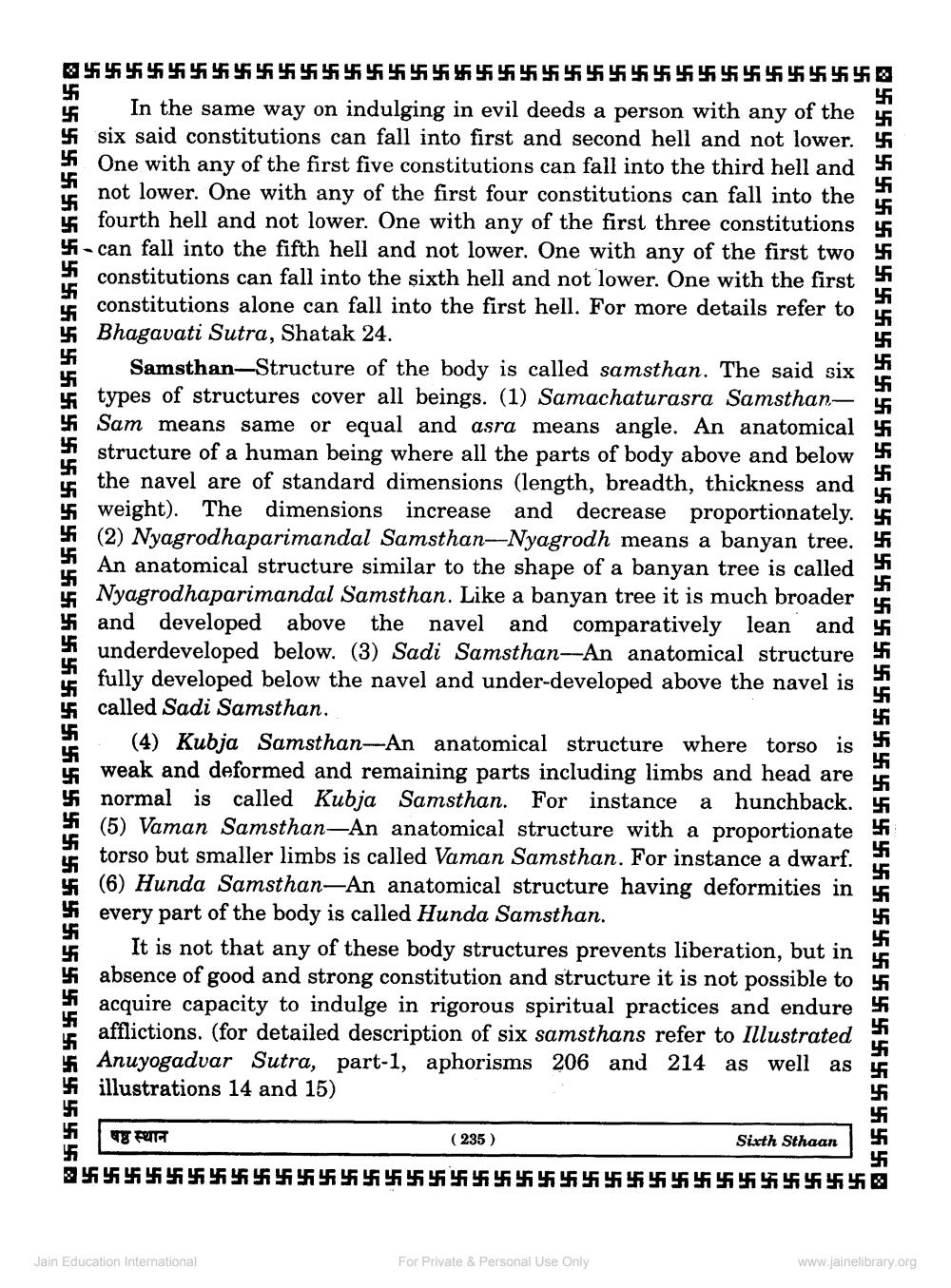________________
455 456 457 45454545454545454545454545
4545454545454545454545454545454545454545454555 $ 4 5 $1$$$45 46 45 46 412
In the same way on indulging in evil deeds a person with any of the six said constitutions can fall into first and second hell and not lower. One with any of the first five constitutions can fall into the third hell and not lower. One with any of the first four constitutions can fall into the
fourth hell and not lower. One with any of the first three constitutions 41 - can fall into the fifth hell and not lower. One with any of the first two 4
constitutions can fall into the sixth hell and not lower. One with the first constitutions alone can fall into the first hell. For more details refer to Bhagavati Sutra, Shatak 24.
Samsthan-Structure of the body is called samsthan. The said six types of structures cover all beings. (1) Samachaturasra SamsthanSam means same or equal and asra means angle. An anatomical structure of a human being where all the parts of body above and below the navel are of standard dimensions (length, breadth, thickness and
weight). The dimensions increase and decrease proportionately. 4 (2) Nyagrodhaparimandal Samsthan-Nyagrodh means a banyan tree
An anatomical structure similar to the shape of a banyan tree is called Nyagrodhaparimandal Samsthan. Like a banyan tree it is much broader and developed above the navel and comparatively lean and underdeveloped below. (3) Sadi Samsthan-An anatomical structure fully developed below the navel and under-developed above the navel is called Sadi Samsthan.
(4) Kubja Samsthan-An anatomical structure where torso is weak and deformed and remaining parts including limbs and head are normal is called Kubja Samsthan. For instance a hunchback. (5) Vaman Samsthan-An anatomical structure with a proportionate
torso but smaller limbs is called Vaman Samsthan. For instance a dwarf. 151 (6) Hunda Samsthan-An anatomical structure having deformities in every part of the body is called Hunda Samsthan.
It is not that any of these body structures prevents liberation, but in absence of good and strong constitution and structure it is not possible to acquire capacity to indulge in rigorous spiritual practices and endure afflictions. (for detailed description of six samsthans refer to Illustrated Anuyogadvar Sutra, part-1, aphorisms 206 and 214 as well as illustrations 14 and 15)
455 456 457 454 455 456 457 455 456 455 456 457 455 456 457 458 455 456 457 455 456 457 454 455 456 457 458 455 456 457 454
$$$$$$454 455 456 457 455 456 457 454 455 456 455 456 457 454 455 456 45 44
4
455 455 456 457 455 456 457 455 456 457 45
षष्ठ स्थान
(235)
Sixth Sthaan
24 45 46 45 45 45 45 45 456 457 4541414141414141414141414141414141414141414141414141
Jain Education International
For Private & Personal Use Only
www.jainelibrary.org




